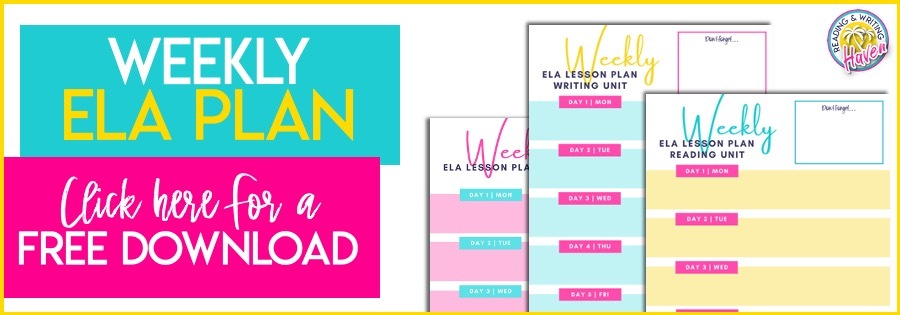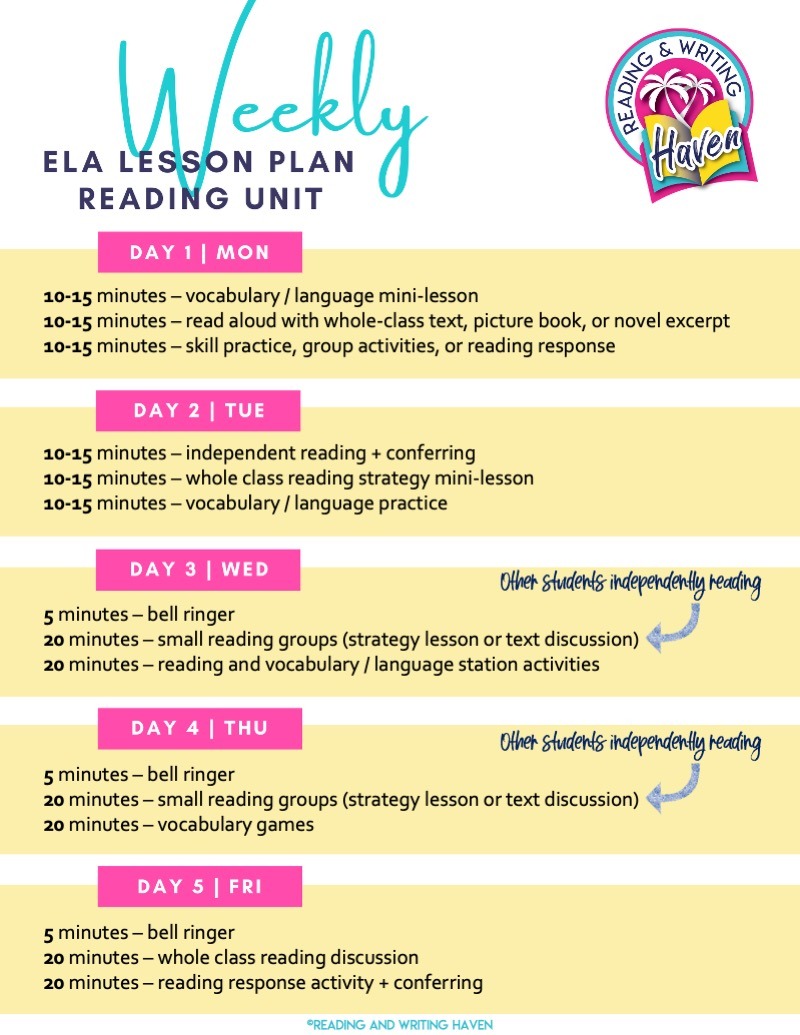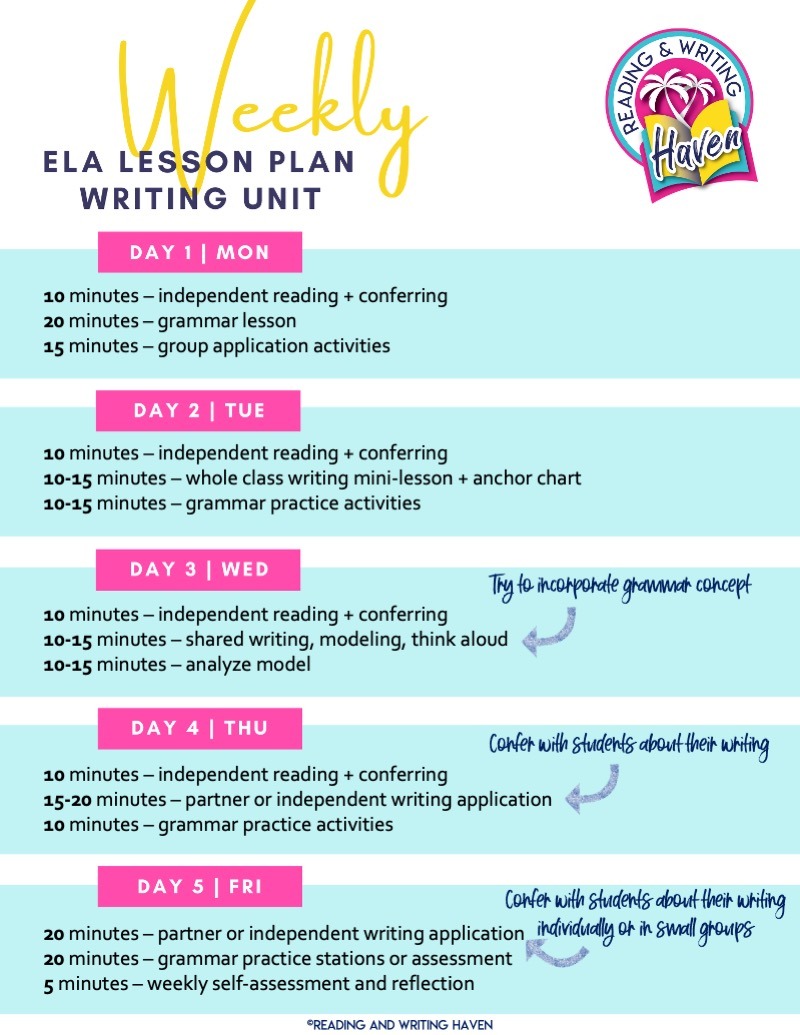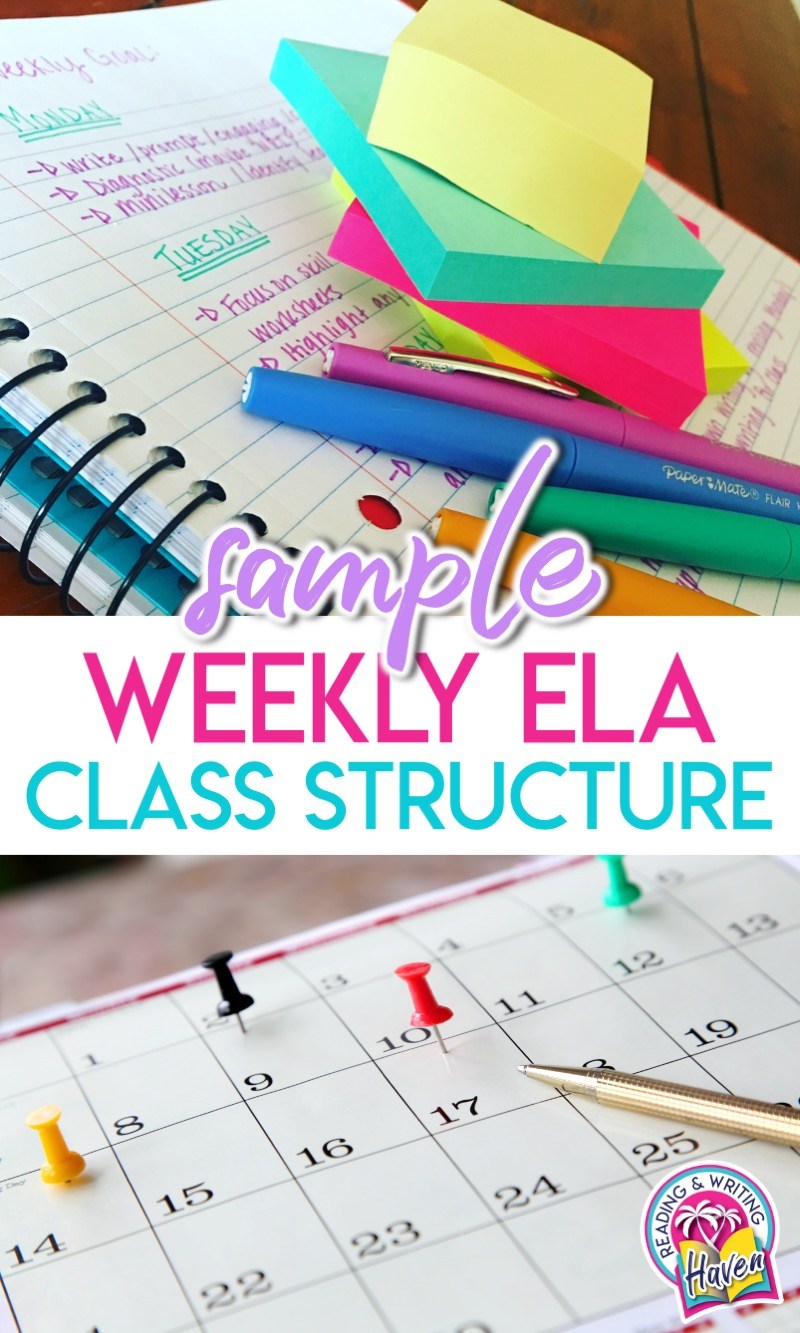Daily and Weekly ELA Plans
Looking for a daily ELA plan? Perhaps a weekly ELA plan? In this post, you’ll find some ideas for both. I hope they provide a starting point or spark your creativity to craft something that works best for your own situation.
Teachers like to be organized. And, why wouldn’t we? Going into a new school year, week, or even day feeling like we have a confident handle on what is going to happen is empowering. The thing is, it’s hard to fit teaching into a tidy box. I love talking about pacing curriculum, but creating too much structure can prohibit us from responsive teaching…if we adhere to it too tightly.
Still, there’s nothing wrong with getting organized and having a game plan. Part of the difficulty with creating a daily or weekly ELA plan is that it varies, often, by the unit we are teaching. Another factor to take into consideration is the length of the class periods.
Let’s explore some ELA weekly plan options for different scenarios.
READING UNITS
If you’re heading into a reading unit with short class periods (like we do – 44 minutes is not much!), you’ll want to try to chunk your periods into two to three different segments.
This is my typical daily structure:
- 10-15 minutes: bell ringer (independent reading or vocabulary study)
- 10-15 minutes: whole class mini lesson or read aloud
- 15 minutes: group or individual work with time for conferring
Sometimes, mini-lessons are long or students need more time to discuss what they are reading and to apply strategies. So, depending on where I am in a unit, I also use this daily ELA plan:
- 20 minutes: mini lesson, independent reading with conferring, group work, activities, or assessment
- 20 minutes: individual work with conferring or assessment
I always try to leave some bookends at the front and end of the class period to connect the lesson to the overall unit and learning targets. This time is also helpful for building in reminders and allowing students to record work in their planners and for filling out exit activities.
Weekly ELA Reading Plan
What might this weekly ELA plan look like over the course of a week during a reading unit?
I almost hesitated to write this post because I didn’t want anyone to walk away feeling like this is the gold standard. The suggested structure below is what I try to stick to for engagement and for workshop-style teaching, but that’s certainly not to say it’s the only acceptable approach.
The graphic below provides some specific ideas for how to fill the chunked time slots meaningfully. Adding daily vocabulary or language practice – or, as often as possible – is important to me. This plan works well for literature circles and book clubs as well as for analyzing shorter texts.
WRITING UNITS
Writing units could look similar. If your class periods are short, you may want to stick to grammar and writing standards. When I alternate units, I try to use reading as a springboard for writing as much as possible so that we are still integrating concepts. This is not to say, either, that we don’t talk about vocabulary words we have learned with grammar or analyze grammar while reading. It just isn’t built into the period to take up a specific chunk of time.
This is my typical daily structure for writing units:
- 10 minutes: bell ringer (independent reading with conferring)
- 10-15 minutes: whole class writing or grammar mini lesson
- 15 minutes: group or individual writing with time for conferring
But, depending on where I am in a unit, I also use this daily ELA plan:
- 20 minutes: group work, stations, peer revision or discussion activities
- 20 minutes: individual writing with conferring
Weekly ELA Writing Plan
Below, you’ll find an organized weekly ELA plan for writing that you could use as a reference while lesson planning. As you can see, it’s relatively simple to shift around types of instruction and application. Having the structure of the organized time slots just helps me to maximize engagement and prioritize students’ voices.
I do prioritize daily independent reading during writing units. I never want my students to think that reading is only something we do during a specific reading unit. The conferring is key to building relationships and helping students grow their reading skills. Plus, there’s so much potential to integrate grammar and writing lessons by studying author’s style in their independent reading books.
Different Class Lengths
Teachers have emailed me with questions about the best way to structure their weekly ELA plan, and it’s such a weighted question…one that I love to dig into. One of the largest variables in creating this plan is maximizing the class time. I recently surveyed teachers in my Facebook group regarding the length of their class periods.
80 to 90 minute class periods were actually the most popular. In comparison to the outlines above, created for 45 minute class periods, 80 to 90 would feel like a dream. (Although I will say the urgency of the shorter class periods really forces you to make sure no time is wasted.)
A Possible Daily ELA Plan for Longer Periods
In this lengthier scenario, you really could have the best of all worlds and incorporate all facets of the ELA core curriculum. Imagine…
- 5-10 minutes: vocabulary bell ringer, like this or this
- 15 minutes: reading mini-lesson, read aloud, or strategy groups
- 10-15 minutes: independent reading and conferring
- 15 minutes: writing or grammar mini lesson
- 15-20 minutes: writing practice, stations or group application activities
You could tie the writing activities to the current whole-class reading or students’ novels, or you could leave them separate. However, transitions tend to flow more naturally when one part of the lesson connects to the next.
For example, we can say, “Let’s find a good place to stop in our independent reading books... During our reading mini lesson and conferences today, we talked about how authors use text features intentionally to enhance the reading experience. As we move into our writing lesson, let’s keep those ideas in mind. We’ll be talking about how we can add text features to our own essays to make them more informative and visually pleasing.”
Tip: Purposefully alter interactive opportunities with those that are more low-key to give students a variety of experiences and to keep them from becoming bored or overstimulated.
I hope that reading this post has been a little bit like peeking into my lesson plan book. Sometimes, seeing how other teachers choose to structure their lessons inspires us to adjust our own, and I’m happy to be that virtual teacher across the hall for you.
RELATED READING:
If you’d like to read more about fitting it all in with teaching English Language Arts, you can find more ideas in these posts:




